 Happy World Water Day! It only makes sense that element that we rely on for life itself should have its very own day. World Water Day was instituted by the United Nations to remind us that much of the world still faces a global water, sanitation and hygiene crisis, and that it is our urgent obligation to act.
Happy World Water Day! It only makes sense that element that we rely on for life itself should have its very own day. World Water Day was instituted by the United Nations to remind us that much of the world still faces a global water, sanitation and hygiene crisis, and that it is our urgent obligation to act.
This year the theme of World Water Day, March 22, is “Water for Food Security.” 1.3 billion tons of food are wasted or thrown away every year. Cutting that amount by 50% would save 1,350 cubic kilometers of water annually. Agriculture uses 85% to 95% of all water in many developing countries. While we can’t stop consuming food and water altogether, there are a few things we can do to conserve water and honor World Water Day this year.
Participate in one of the many worldwide events People across the globe are coming together tomorrow to recognize the importance of water for food security and educate themselves. Check out the UN’s World Water Day website to find an event near you.
Conserve water If you live in an area prone to droughts, you may already live by these tips! Turn off the faucet while you brush your teeth. Adjust your sprinklers so they don’t run in the middle of the day when the sun will simply absorb it. If you have a dishwasher, only run it when the machine is full. If you wash by hand, consider filling one side of the sink to wash in rather than leaving the faucet running. A few simple adjustments can make a world of different on your water footprint!
Conserve food Did you know that most of the water we “drink” is embedded in the food we eat? For example, the production of 1 kilo of beef consumes 15,000 litres of water, while 1 kilo of wheat ’drinks up’ 1,500 litres. Reduce your food waste by paying close attention to the expiration dates on your food, and reducing your meat intake. In the United States, more than 25% of food goes wasted every single year!
Sponsor a water project If you’d like to make a global impact, consider sponsoring a water project. Charity: Water, Water.org, and the UNICEF Tap Project are just a few of the many organizations working to provide water to those without. With more than three times more people lacking water than those living the United States, water projects need our support.
Donate your voice Do you use social media? If you have friends and followers, consider loaning some of your social media updates to raise awareness of World Water Day. Social media is a powerful tool, and you may very well incite your friends to action!
Calculate your water footprint Calculate your water footprint with Water Footprint Network’s Quick Calculator; you may be shocked at what you find! Compare and contrast the water footprints of various countries to gain a better understanding of the shortage.
Get your kids involved If you’d like to get your kids involved, be sure to check out our friend, GenerationOn’s, Project of the Month. The cute animal pictures are just a bonus!
How will you act for World Water Day? Let us know in the comments below.



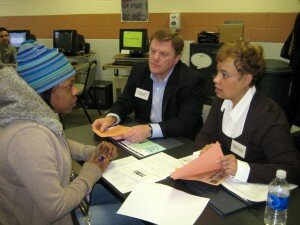
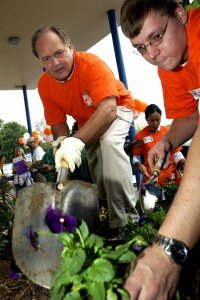

 Get ready for the inevitable rise of the living dead. Being prepared is the most important part of any emergency, and different emergencies require different kinds of preparedness. there are some basic steps that you want to follow for all emergencies, though. Make sure that you have a plan in place and everyone in your family knows what to do when the zombies finally come.
Get ready for the inevitable rise of the living dead. Being prepared is the most important part of any emergency, and different emergencies require different kinds of preparedness. there are some basic steps that you want to follow for all emergencies, though. Make sure that you have a plan in place and everyone in your family knows what to do when the zombies finally come.

 Today’s post comes from Mauro Cipparone, one of the co-founders of Romaltruista, a
Today’s post comes from Mauro Cipparone, one of the co-founders of Romaltruista, a  Today’s post comes from Francis Paulino at
Today’s post comes from Francis Paulino at  While one student stood up front writing words on the board, the others helped out the Sunshine Home residents with their pronunciation. The student up front would write and say “boat, b-o-a-t, boat!” and the residents would cheerfully repeat their newly learned word in English.
While one student stood up front writing words on the board, the others helped out the Sunshine Home residents with their pronunciation. The student up front would write and say “boat, b-o-a-t, boat!” and the residents would cheerfully repeat their newly learned word in English. One of the residents even sang a song in English! And out of all songs he could have known I was surprised with his choice when I heard the words to John Denver’s “Country Roads”! Some of the volunteers from Shanghai Institute of Foreign Trade also shared their beautiful voices by singing tunes by Michael Jackson that everybody knew. Overall, the atmosphere was one of celebration and everyone had a great time!
One of the residents even sang a song in English! And out of all songs he could have known I was surprised with his choice when I heard the words to John Denver’s “Country Roads”! Some of the volunteers from Shanghai Institute of Foreign Trade also shared their beautiful voices by singing tunes by Michael Jackson that everybody knew. Overall, the atmosphere was one of celebration and everyone had a great time! For the last thing on the list, the volunteers planned for everyone to play the game called the “Human Knot”. By then everyone felt comfortable enough to holds hands and tie each other in a knot by going in between people without letting go of your neighbor’s hands. After getting twisted into a knot, everyone had to work together as team to untangle themselves, which was received with cheers, claps and a feeling of accomplishment when the task of getting untangled was finally accomplished.
For the last thing on the list, the volunteers planned for everyone to play the game called the “Human Knot”. By then everyone felt comfortable enough to holds hands and tie each other in a knot by going in between people without letting go of your neighbor’s hands. After getting twisted into a knot, everyone had to work together as team to untangle themselves, which was received with cheers, claps and a feeling of accomplishment when the task of getting untangled was finally accomplished.
 Today’s blog post comes from Perry Teicher, a Returned Peace Corps Volunteer who served in Kazakhstan from 2007-2009. This is the fourth of five posts about his
Today’s blog post comes from Perry Teicher, a Returned Peace Corps Volunteer who served in Kazakhstan from 2007-2009. This is the fourth of five posts about his 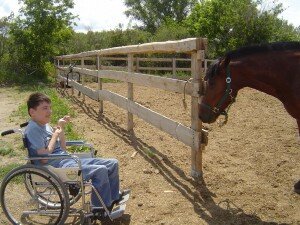 Starting with one participant – Yan – over 10 children eventually participated in our riding program. Over the course of the months, parents started noticing changes in their children; ranging from becoming more outgoing to better posture. In addition to the parents and riders, our volunteer played a role, learning how to work with horses and learning basic therapeutic techniques.
Starting with one participant – Yan – over 10 children eventually participated in our riding program. Over the course of the months, parents started noticing changes in their children; ranging from becoming more outgoing to better posture. In addition to the parents and riders, our volunteer played a role, learning how to work with horses and learning basic therapeutic techniques. Today is the worldwide launch of inaugural Peace Corps month celebrating the
Today is the worldwide launch of inaugural Peace Corps month celebrating the 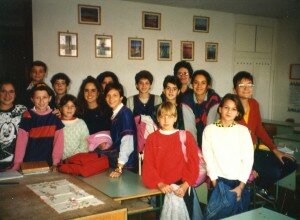 I had speculated on Hungary in my studies, but I didn’t know at that point how easily I would fall for the beauty of the Hungarian spirit.
I had speculated on Hungary in my studies, but I didn’t know at that point how easily I would fall for the beauty of the Hungarian spirit. Imagine a country where the only supermarket was called “SUPERMARKET,” where there were no brands to choose from, no choices. All the “DEPARTMENT STORES” had the same kinds of coats in one season in the same styles and in the same colors… No room to express- no way to interpret art, no superficial way, anyhow, to just be different.
Imagine a country where the only supermarket was called “SUPERMARKET,” where there were no brands to choose from, no choices. All the “DEPARTMENT STORES” had the same kinds of coats in one season in the same styles and in the same colors… No room to express- no way to interpret art, no superficial way, anyhow, to just be different.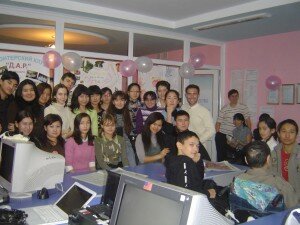 More than two years after the club launched, there are now over 100 active volunteers. Our starting cadre have graduated and many have left the city to pursue careers and advanced degrees, but they continue to stay involved, using their volunteer experience as a basis for working with others. In Aktobe, the Volunteer Club has become known as a high point of youth involvement, invited to participate in activities throughout the area. Peace Corps Kazakhstan usually only places three Peace Corps Volunteers consecutively at an organization. After the volunteer that replaced me, my organization already had three volunteers. Due to the success of the Volunteer Club and its growth as an independent organization, the Volunteer Club itself has received its own Peace Corps Volunteer.
More than two years after the club launched, there are now over 100 active volunteers. Our starting cadre have graduated and many have left the city to pursue careers and advanced degrees, but they continue to stay involved, using their volunteer experience as a basis for working with others. In Aktobe, the Volunteer Club has become known as a high point of youth involvement, invited to participate in activities throughout the area. Peace Corps Kazakhstan usually only places three Peace Corps Volunteers consecutively at an organization. After the volunteer that replaced me, my organization already had three volunteers. Due to the success of the Volunteer Club and its growth as an independent organization, the Volunteer Club itself has received its own Peace Corps Volunteer. Perry Teicher is the Repair the World Fellow, 2010-2011. He served in Peace Corps Kazakhstan (2007-2009). Feel free to e-mail him at .
Perry Teicher is the Repair the World Fellow, 2010-2011. He served in Peace Corps Kazakhstan (2007-2009). Feel free to e-mail him at .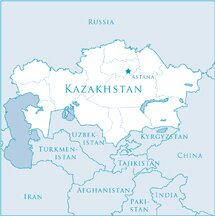
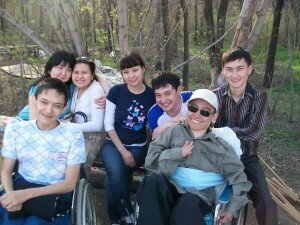 I worked at the
I worked at the 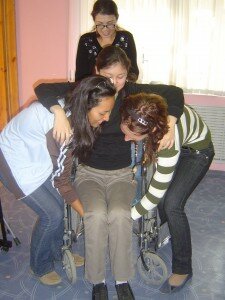 4) Training volunteers Volunteer training included physical and psychological preparations, such as how to use a wheelchair and strategies to deal with miscommunication. My Kazakhstani colleagues all had a physical disability and thus had greater credibility as they could speak from personal experience.
4) Training volunteers Volunteer training included physical and psychological preparations, such as how to use a wheelchair and strategies to deal with miscommunication. My Kazakhstani colleagues all had a physical disability and thus had greater credibility as they could speak from personal experience. Perry Teicher is a Returned Peace Corps Volunteer (Kazakhstan, 2007-2009). He is Co-Founder and President of TheGivingApp, L3C, a company focused on creating mobile applications for non-profits.
Perry Teicher is a Returned Peace Corps Volunteer (Kazakhstan, 2007-2009). He is Co-Founder and President of TheGivingApp, L3C, a company focused on creating mobile applications for non-profits.
